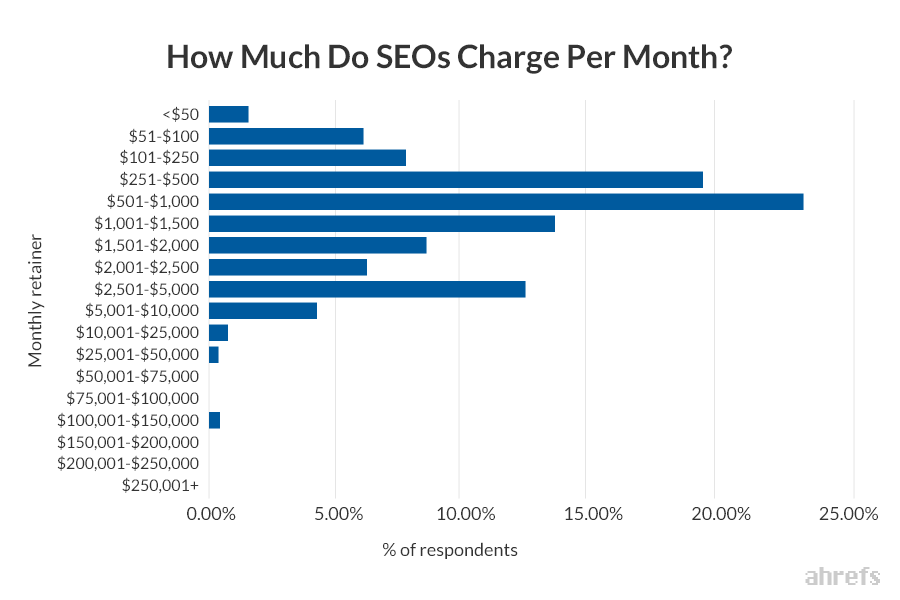The Significance of Value Stream Management for SEO Agencies

With all the new competitors springing up, businesses worldwide have been beefing up their weapons.
This includes product research, analytics tools, automation to heighten efficiency, and even comparing your website domain reputation against your competitors. Some even make sure to track their competition, see what they are doing, and employ the same or even better tactics for themselves.
And yet, among all of these different methods, SEO remains king. SEO agencies have wielded this online weapon with expertise for years, able to use it to increase traffic, place just about any website to the top of the ranks, and even use it to support other forms of marketing.
The competition has always been fierce for companies, and every player has employed just about every growth hacking strategy and specialized tool in the books. But all the companies worth their salt, from large enterprises to small businesses and entrepreneurs, know that the real value lies in SEO.
Moreover, SEO not only gives value but also defines that value. And it’s never more evident in the case of SEO companies that are now the cornerstone in digital marketing in an increasingly digitally-based world. SEO agencies are invaluable now, especially with many companies taking their business online and needing software to facilitate it.
One of the terms that might come up when finding the best company to deliver competitive SEO options is value stream management. But what is it, and why is it relevant to SEO agencies?
Value stream management (VSM) is a term often thrown around along with the words “innovation,” “excellence,” and “delivery.” It’s something that anyone in the management would know is essential and could make or break a company’s ability to maintain the edge. Software is one major factor that could put a company on top or render it obsolete. And that is where VSM is proven. An SEO company’s software is only as good as how it performs and how much value it can deliver in counter to the cost of running it.

VSM creates a value stream in the product or software life cycle — from conceptualization, building the product, and finally, making its way to the customer. Who decides the value of a product? The customer does.
The value itself is what the customer gets, throughout a period, for a price. And because of that, value stream management refers to the different activities that build up that software’s value. This series of activities slowly builds up the value of SEO software itself. In its essence, it optimizes the process of software development to generate revenue.
VSM determines the value of developing the software, improves the organization’s flow of value, and monitors the life cycle of delivering that software. Experts and executives identify and observe the value streams to measure the success of the delivery.
Doing this makes the process more efficient, and teams can put their time and energy into doing practical work instead of spending that valuable time on something that doesn’t work. After all, in any business, time is money. There’s no time to waste on ineffective, inefficient performance.
As a result of this method of optimization, software companies can now deliver higher quality products. Their production process becomes faster and better than that of their competitors and involves far fewer risks.
Mapping the overall flow of the process and information through the company also helps the employees understand how the whole system works. In a way, it’s like an audit of the company’s software creation process, seeking out limitations, mapping out the stages correctly, and finding solutions to areas that seem lacking.
Of course, the best way to understand how the value stream flows in a company and then manage it is to map it out. Value mapping is a complete analysis of how the company’s current processes are working, seeking out functional areas and non-effective areas, and finding a solution to them.
It allows the company to build a better future by studying shortcomings and conceptualizing the product to deliver it. During this analysis, companies must begin gathering the key metrics and measurements involved in the process.
One of the biggest pitfalls that a company might fall into is measuring things that don’t have to be measured. The metrics’ focus should relate to production and determine where the value was lost, seek out weak links to the chain, and maximize efficiency in as many areas as possible. It’s essential to understand the value stream mapping process.
- Look for the process that the company wants to improve, looking into critical roles and responsibilities.
- Know your objective and the scope of what you’re trying to achieve. What are the goals, and what is the endpoint of the optimization?
- Map out what the process is currently. Know and understand the process as it is inside and out.
- Once it’s all mapped out, identify the weak areas, which could be more efficient or improved.
- Map out the future and the solutions to the issues. Find out the best ways to streamline and improve the process and create an action plan.
What can VSM do for SEO?
So what do SEO and SEO agencies get out of something like VSM? Why is it so crucial for SEO companies and agencies to know it?
- Find weaknesses: VSM helps a company identify and correct any constraints in the workflow. It leads to fewer limitations and fewer mistakes made.
- Be better at SEO: Companies with more streamlined VSM can provide customers with better SEO options and better products.
- Continuous improvement: Being complacent never drove anyone to their fullest potential. VSM makes sure that the company is constantly improving and finding new ways to innovate and become better.
- Enables knowledge sharing: VSM maps out the process and promotes knowledge sharing with complete transparency.
The Numbers Game: Should SEO be Integrated With VSM?
The statistics involving the world of SEO and SEO companies make it plain to see that it’s a massive field. Companies navigating it or providing products and services could stand to benefit from VSM, taking more of the pie.

- Around 74.71% of SEO professionals charge a monthly retainer, ranging from about $501-$1,000
per month. - 88.28% of the SEO professionals work on per-product pricing that charges $150 per hour. Furthermore, if they’ve been in the business for over two years, they can charge as much as 39.4% more per hour, 102.41% more for monthly retainers, and even up to 275% more for projects.
- The worldwide SEO market is booming, charging 130% more than the companies that serve the local market.
- The SEO industry is poised to reach $80 billion by 2020 within the US, a significant rise from the past four years.
There is a massive industry behind SEO. Through VMS, an SEO agency or company aiming to be more competitive stands to benefit significantly from the increased efficiency with less risk, whether on an hourly, monthly, or per-project basis with a vast client base rapidly growing as companies move online.
1. Mark Your Metrics
The most meaningful way to get started on employing VSM for your company is to understand what you’re looking for in the first place. That means defining the metrics and objectives that the company hopes to achieve.
What process is the company trying to streamline? What areas should they observe and quantify? Here are some metrics to consider:
- The development cycle time. How long does developing the service take?
- The amount of noticeable change that happens when comparing before and after VSM.
- Lead time and process time: how long does it take to get the ball rolling, and how long does processing take?
2. Know Your Price Stream
Know where the money is going and what value is coming from. This is best done if you make a visualization of the development process.
- Start with creating a visual flow chart.
- Begin from conceptualization of an idea for a software or service
- Create the flow: From an idea, which department does it go to? Who puts it together? What does it take to construct it? And how is it finally delivered and used?
Moreover, it gives you an idea of where efficient or inefficient areas need to be flagged.
3. Look for Silos
Most businesses separate employees into departments or teams with different assignments and roles. As a result, they end up in ‘silos,’ where they only interact with people of similar expertise. With VSM, it’s time to eliminate that. Put the entire group together, with representatives or members from different areas, and get their input on creating the process chart.
Each person from a different department can give valuable insight into what the department does. Furthermore, it shows the other teams how the other silos work and how they impact their own.
4. Define the “Current State Map”
With all the other teams’ input, the company now has an idea of how it works. For example, the SEO keyword team defines what they do, how they define the perfect keywords for a job, and how much time it takes for them to do it.
Those keywords then go to the content team to utilize these keywords based on the essential content marketing KPIs to create great content. They define how long it takes them, how many people must create the necessary content, and more.
The marketing team then disseminates the content according to the best SEO practices. How long does that take? When do they do it, and on what sites? These are all crucial areas of the map to understand.
5. Create a Map of Improvements
Now that everyone knows how it works, how long it takes, and how the process flows, it’s time to find the dead zones. Then, locate the weak spots on the map:
- Are there tools for SEO that can shorten the amount of time for the digital marketing team to find the right keywords?
- Is there organizational software that the SEO Content team can use to communicate with the team to receive the keywords immediately and put them into topics immediately?
- Are there any new techniques that can help each team reach their goals?
6. Put the Changes to Work and Automate
If you’ve found the right SEO automation software, or solutions according to your agency’s needs, it’s time to put them into action.
- Invest in the automated software and marketing tools needed and employ them in every department as required.
- Automate robotic and repetitive tasks for speed and efficiency.
- Continually check the metrics to oversee the teams’ performance.
- Did areas that take time go faster? Is this department producing better material or content? Did the team improve engagement and reach audiences targeted by the SEO using the new invested tools?
Key Takeaway
But the key takeaway here is that VSM is merely a map or a guide: it shows a company where they are in the status quo and how they compare to their competition.
Then, it opens them up to a better look at where they can improve, become more efficient, and outpace the competition if possible. It makes the whole process more transparent and easier to understand.
Most of all, it allows easy tracking of the product or the service from when it begins to where it ends, delivered to the customers. Done right, VSM can reshape any organization, turning it into a cutting edge company at the head of the pack in the SEO world.

